Nutanix CEO Rajiv Ramaswami Talks Broadcom, VMware, And His Vision To Help Partners Drive Business
“There are 200,000-plus customers that VMware has and many of them are going to be looking at what’s happening. There’s a dislocation in the marketplace. And there’s a potential opportunity here for Nutanix partners to gain more of that footprint,” Nutanix CEO Rajiv Ramaswami told CRN.
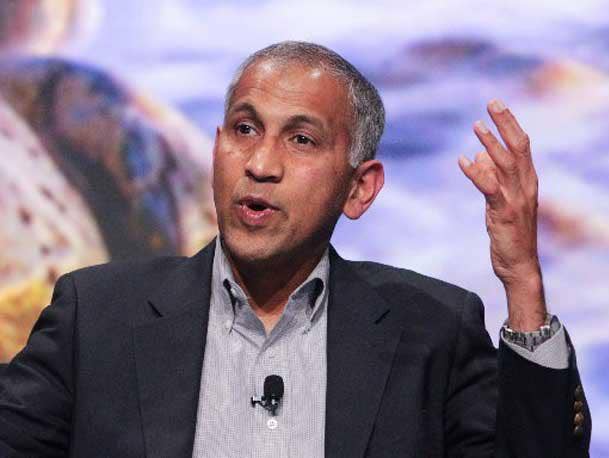
If Nutanix CEO Rajiv Ramaswami is weary of fielding questions about possible bidders in a takeover of the HCI developer, he isn’t showing it.
“It’s not appropriate for me to comment, but we are flattered by all the attention we’re getting,” he said smiling during an interview with CRN.
Ramaswami has a unique perch. He was a trusted VMware leader. Then, a year prior to the company being spun out from Dell, Ramaswami spun himself out to lead Nutanix, VMware’s chief HCI competitor.
VMware immediately sued Ramaswami, but months later dropped it and settled for an undisclosed amount. By October of this year, VMware CEO Raghu Raghuram called Ramaswami a “friend” while onstage at The Channel Company’s BoB Conference and praised Nutanix HCI products.
Ramaswami talked with CRN after stellar quarterly earnings in which Nutanix grew revenue 15percent and achieved positive non-GAAP income for the first time in the company’s history. In VMware’s most recent quarter the company recorded 1 percent growth in line with expectations. Ramaswami said he does not expect the uncertainty from Broadcom’s acquisition to win deals for Nutanix any time soon, but he is telling partners to keep an eye out for oppertunities.
“There are 200,000-plus customers that VMware has and many of them are going to be looking at what’s happening. There’s a dislocation in the marketplace. And there’s a potential opportunity here for Nutanix partners to gain more of that footprint,” he said.
Despite the good revenue numbers, the question came back to rumors of takeover, which by Friday of last week included the name of a possible buyer: Hewlett Packard Enterprise. One Nutanix partner hoped that particular combination would not come to pass, but if there is a deal in the making, Ramaswami isn’t saying.
“In some ways, you know, it’s a testimony to the fact that we’re doing something good in the marketplace,” he said.
Ramaswami talked about the future of the Nutanix channel, addressed the takeover rumors, talked about what partners can expect in 2023, and where Nutanix is already seeing success against VMware.
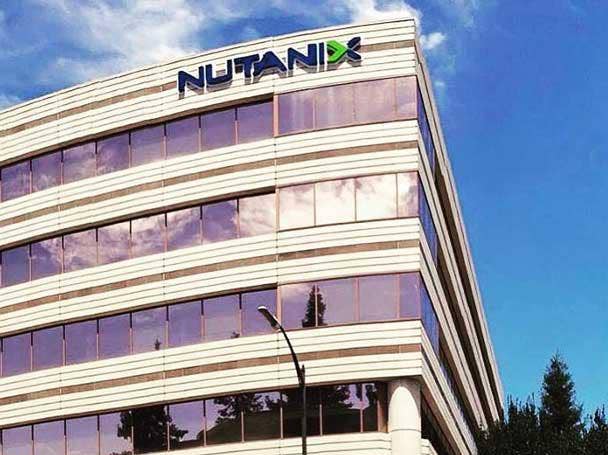
There has been a lot of talk about a possible takeover, whether in relation to the board governance changes, or what was reported in the Wall Street Journal, or what was in Bloomberg, it’s become kind of persistent. So I just want to give you a chance to talk about that.
First of all, there’s no connection between the governance changes and any rumor.
We started out early this year with eliminating a dual-share class. In fact, that’s probably the most significant governance change and nobody even said much about it at that time. This was in February or January that we did that. That’s the voting control. The dual-class Class A and Class B shares. One class of shares was at a 10x voting, and that’s no longer there. So now it’s equal. And it’s been that way since the beginning of the year.
And then the more recent governance changes, public companies, as they get more mature, typically will declassify their board. So typically, in classified boards, you get a portion of the board to stand for election every year, and then a declassified board, everybody stands for election, the same year. And we made that change as well.
Now, in terms of the rumors and speculation, look, it’s not appropriate for me to comment, but we are flattered by all the attention we’re getting. And in some ways, you know, it’s a testament to the fact that we’re doing something good in the marketplace. And we’re doing something that our customers like. We’re trying to help them continue to simplify their infrastructure. Help them walk in the cloud, with a cloud platform. We’re going to provide them freedom and flexibility of choice and delight. Our NPS score continues to be at 90 plus. So that’s really what we’re focusing on, on the financial front.
We are very focused on building a sustainable, profitable, growing company. And so that’s what we are focused on doing. And we continue to do that.

I talked to a partner yesterday who said Nutanix needs to improve their marketing, and they need to get more aggressive with their marketing around the Broadcom acquisition of VMware, to get out there and really start talking about the advantages of the Nutanix platform. What do you say to partners who would like to see more of that?
Thanks for that feedback from the partner community. We’re always listening to them. And we’re always doing what we think is needed to make them successful.
From a marketing perspective, we do have a new CMO [Mandy Dhaliwal] who has been with us for the last six months and she’s doing a great job of changing our narrative. We are no longer just a HCI company. We are a hybrid multi-cloud company. We provide a complete cloud platform. We help our customers run applications and workloads, wherever they like to run them: on prem, in the public cloud, in the edge locations.
It’s a much bigger play than what we were 10 years ago and that’s a fundamental thing that we’re doing.
With respect to the opportunities that we see as a result of Broadcom and VMware, I think that’s a very real opportunity. We have seen significantly more engagement with our customers over the last six months since the Broadcom acquisition was announced, and customers are concerned about potential price changes, potential innovation and roadmap changes, and support changes. What we’re hearing from the partner community again, is that, you know, they’re also equally concerned about how they’re going to be supported going forward.
So, from a marketing perspective, we do have a campaign out there really around the theme ‘VM Where?’ and we are here to help. And that’s how we approach our customers, ‘Hey, we understand your concern and we are here to help. We are here to be long-term partners with you and make sure you continue to be successful.’
That’s what we are focused on. And it’s the same message to the partner community as well. Our partners’ success is our success. Now, if you look at where we are right now, we are focused on two things: partner autonomy, and specifically making that autonomy button trustworthy. So we have a partner program. We want to do two things with that. We want to make sure our partners are well enabled, and well motivated to conduct business autonomously with that, and we want them to be able to run on their own and go drive the business.

We were talking with [VMware CEO] Raghu (Raghuram) in October. We asked him what VMware partners can expect under Broadcom? And he said, ‘Expect a lot more empowerment.’ So in that same vein, in 2023, what can Nutanix partners expect from Nutanix?
Like I said, we want to make it worthwhile for the partners to conduct business autonomously.
That means that they can drive deals faster, they can drive more deals, faster and sooner, and it’s good for the partners.
The second thing we’d love for partners to do is to be part of the entire life cycle with us. We have transitioned to a subscription business. The life cycle of a subscription business really is you start with the new business, we want our partners to be able to go drive that and bring that business in autonomously.
Then we want to involve them in the entire life cycle of that, which means adoption. And then when it comes to renewals, yes, we want you to participate in the renewals as a partner. And at the same time drive expansion, because renewables is also a good time to expand the business. So that is the flywheel of the subscription business. And we really want to build that flywheel with our partners.

You have some new channel leaders as well stepping forward, right? What are their priorities?
We do have a new channel leader [Dave Gwyn (pictured)]. He’s not new to Nutanix, he’s been around for 10 years. He’s one of our veterans. He’s pretty much been in, and cycled through every role at Nutanix. Most recently Dave spent time building the renewals business. And so we find it very logical with Christian (Alvarez) leaving to have Dave also take over renewals at the channel, because what we want is to actually take the same flywheel and bring it into the channel as well. So we want the channel to be, like I said, part of the full life cycle. And Dave, you know, since he’s been a veteran here in Nutanix, he understands what it takes. And he’s very committed to building that flywheel with our partners and making our partners autonomous, making sure they’re well rewarded for it, and making sure they’re able to participate in the entire life cycle. So the subscription journey, I think, is a key thing, which is something that we have been going through for the last few years. And our partner community also has been coming along with us but I think not fully there yet.
And we ourselves are only now getting there fully because only in the last year did we build our renewals business in the renewal team. And now we see the effect of that.
This is something that extends to the partners because during the renewal cycle, it’s time to do expansion. This is how you continue to grow the business.
You have an existing business that you need to continue to renew, and do so efficiently that keeps things going. And very predictably, and then on top of that, you continue to add new business. That’s the subscription fly wheel that we need to build. And our partners need to go there too, because guess what? That’s really where our customers are going.

During the earnings call you were talking about two big deals that came through partners. What kinds of partners are those?
First of all, all our business pretty much gets transacted through our partners. We don’t do much direct business at all. Okay. So partners are in the mix for almost everything. If you look at that revenue, I would break it into partner-generated and partner-fulfilled.
Now what we’d like to do is to see them do even more from a generation perspective. So our channel partners are able to go out there, identify deals, work with our customers and be able to go drive those themselves.
That part we would like to build. We would like to invest in our partners, help enable them to do that. Both enable them and make it worthwhile for them to do that, from a compensation perspective and margin structure perspective for our partners. We want them to be driving more business for us.
Now, when you look at the channel itself, the different kinds, you know, when we look at our partner network, we have multiple classes, we have our traditional VARS, and we will continue to invest in them, and two-tier [distribution], we have also our service provider partnerships.
And that’s a relatively new thing for us in terms of service providers as partners for us. We’ve been investing in that route to market over the last couple of years. And you saw some of the results of that this quarter, our two largest new logo deals were sourced through that service provider network.
One of them, I think, was a large publishing house, in Europe. And, again, they signed up for the platform, that business has been driven by our service provider partner. And we’re very thrilled with that. And we want to see more of that happen.
And again, it’s another way to scale because, to your question earlier about regional partners as well, many service providers also tend to be regional. And, there’s a lot of interest in customers wanting to get their infrastructure managed by regional service providers, delivered by region service providers. It’s not all public cloud. In fact, when we look at it, the world for us is the long-term data centers, there’s public clouds, there are edges, and there are localized service providers.
So that’s definitely an important route to market for us. We want to continue investing in that route.
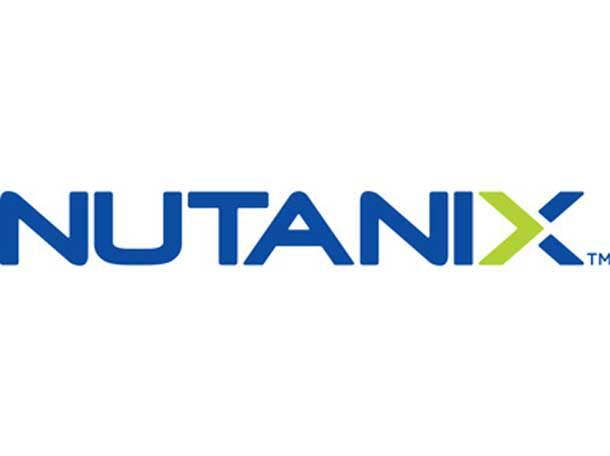
One partner said they need Nutanix to help them to grow their own business. Whether that’s with MDF funds or other resources. So what are some ways Nutanix is helping those partners?
I’ll give you some simple things here. So first, of course, investing in them, enabling them and training them. We help our partners build a practice and with the entire portfolio. Our portfolio by the way, we have taken a lot of effort to simplify and make it more channel friendly, make it more customer friendly.
Instead of 15 different products with 15 different price points, that’s now consolidated down basically into four: how to build a cloud, how to operate a cloud, unified storage, and database service.
Those are the four offerings. Really simple, much more channel friendly. We want to enable the channel to get familiar with those products and take them to market. So enablement in training them, incentivizing them, in terms of higher margins. They can actually source deals. We’ve got that as part of our Nutanix Elevate partner program. Driving partner autonomy, enabling them.
We’ve given them our quoting and sizing tools. Now, our disties have a price list with standardized discounts that our partners can go off and run with. So driving their autonomy, enabling them to quote deals directly to the customer, taking them further along in the journey without us getting in the way, so to speak. We are there to help. We don’t want to be in the way.
So those are all ways that our partners can actually drive more business at high velocity.
Another partner said he’d like Nutanix to attract stronger sales associates, but it sounds like you might counter, ‘We need more strong partners’?
We’ve got to have both. It’s not one or the other. Of course we need strong sales reps. We’ve built out our sales team, we built out our sales reps, we continue to build them out, we continue to hire people there. We continue to focus on our sales reps productivity as well, and how they can be more productive.
But I think part of the equation here is these two work together. They’re not independent entities. The sales reps are here. The channel is here. But the two are working hand in hand. The best accounts are where our sales reps work hand in hand with channel partner to go together. And that’s true for a good chunk of the accounts.
Then there’s going to be, in my view, where I’d like to get to with the channel, is there’s going to be a set of accounts, or maybe some segments or regions that are driven entirely by the channel without even having any of our reps. I mean, that is a logical end to where we can take partner autonomy. You know, first we help the partners do more, but then that gets to a point where the partner can do the whole thing.
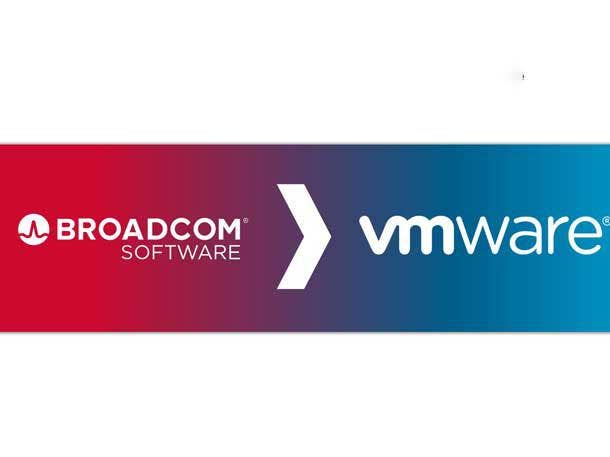
How should partners be talking about the Broadcom VMware deal to prospects? Are there any messages that you are delivering to partners like, ‘As this moves along, these are things that you need to put out in front of prospects?’
I can tell you what we told our sales reps, and this is exactly what we’re doing with our partners, because it’s the same message to the customers, right? When they talk to their customers, whether it’s a channel partner doing that, or whether it’s about having this as a topic that is top of mind for almost every customer of VMware.
They may be at various ends of the spectrum here in terms of how they think about it. Some of them may be more actively looking at alternatives, others may be happy with the status quo. But the conversation is around making them aware and asking, ‘How can we help? Hey, this acquisition is happening. You need to be aware of what can potentially happen here. And we’re here to help.’
And I think that’s the same message that partners need to also deliver to their customers. And build that awareness and have those conversations. And it opens up new doors, it opens up new opportunities.
And I can tell you that we are now talking to many, many prospects that didn’t engage with us in the past. They are the people coming to us now to have those conversations.
Nutanix just announced Azure for bare metal availability. Partners were very happy about that. Are there any plans to expand that beyond Azure and AWS? Are you talking with Google or anyone else?
Yeah, from a perspective of where we were focused, first it was AWS, now its Azure, and the third route that we are really investing in are service provider partners.
There will be other public cloud ones like Google and so forth, but those are roadmap items for us. Not in the short term.
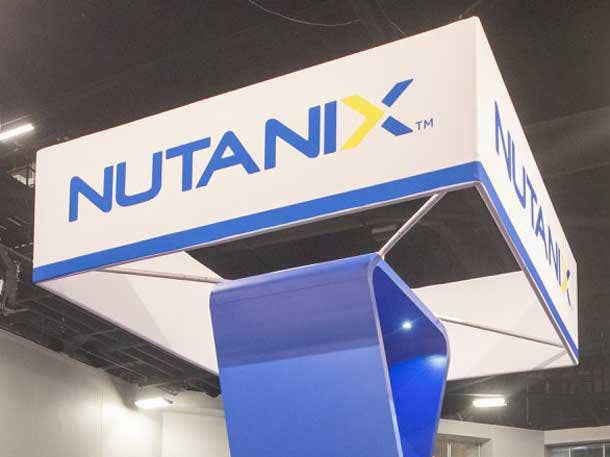
With everything happening in the macro economy here, what do you tell the channel partners when it comes to ‘This is how we’re going to beat VMware’ or ‘This is how Nutanix is going to win.’ What are you telling them?
We say four things. Why do you want to work with Nutanix?
Well, fundamentally, when you look at the customer value proposition, the Nutanix product makes life simple for our customers. It is way simpler for people to operate Nutanix than most of the compatible solutions. And we have a lot of proof points in terms of like how people go from like a team of 20 people managing the infrastructure - 20 specialists who understand compute storage networks - to a team of four people managing an infrastructure much bigger than what they were managing. Four generalists.
The second is freedom and flexibility of choice for the customers. We’re not focused on locking them in. We are focused on providing them flexibility at every level layer of the stack. They can have their choice of hardware partner that they’d like to work with. We work on top of anybody’s hardware. Pick your choice of hypervisor. If you’d like to work on VMware hypervisor, great. We support that. If you’d like to use our own, we do that too. Choice of Kubernetes stack. Now, choice of public cloud as well. So complete choice. Choice of licensing. We’re not locking them into long-term contracts. We’re fine if they want to buy a one-year term from us. Great. Three-year term? Great. Whatever they’d like to engage with us on.
And the flexibility of choice, that license, the subscription that they buy from us, is completely portable. No restrictions. They can use it in the datacenter today. They can use it as a public cloud tomorrow.
Third is really around delighting customers. When they’re partnering for the long term customers like the experience they have with us. You know, our NPS score continues to be at 90, even as we scale the business.
The fourth, fundamentally, is we have a strong focus on helping our customers manage the data at every layer: blocks, files, objects. Compute? We think of compute as more of a commodity these days. A lot of the action is really in the data and managing the data. And we extended up the stack in terms of managing databases as well. Now those are the four things that are the fundamental customer value proposition differentiators for us as a company.
Now, from a partner’s perspective, what I would say at this point is that those resonate with our customers. Now there’s an increased opportunity to capture more and more customers.
There are 200,000-plus customers that VMware has and many of them are going to be looking at what’s happening. There’s a dislocation in the marketplace. And there’s a potential opportunity here for Nutanix partners to gain more of that footprint.
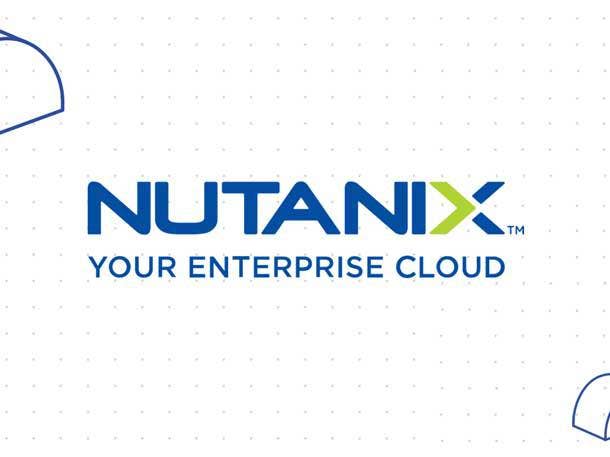
Where will Nutanix find success in the next year. Where are you placing bets for 2023?
When we look at the market, I mean, our customers are looking at running their applications and data everywhere. They want to use the best of both public and private cloud environments. I think what we are seeing now is they are much more careful about what they want to do there.
They think before they go. It used to be people just go into the public cloud. Now, it’s ‘Yeah, I still want to go to the public cloud. But I want to do so carefully. And I want to think about how I’m going to optimize my costs or my security or my data management.’
What we’re seeing in the marketplace is that is a strength of ours. We help them do that. Operating across multiple clouds is complex. We make it simple. We make it effective for our customers to operate in this environment and get the best of private and public clouds.
By delivering a single platform, it’s simple, consistent, and you don’t have to have three different teams manage each of your three different cloud environments.
One team managing all of it, really simple, and cost effective and portable. So that’s really what we see in the market and where we are squarely positioned.
For us, this year has been an inflection point as a company. We’ve transitioned from just being a growth company to a profitable growth company. And continuing to drive that, even in an uncertain macro environment, as we all know, where things are at, is also a key priority for us.
I wouldn’t call it a bet. It’s more of a strategic priority for us to make sure that we continue down that path. And you’ve seen that in our results and also in our guidance for the rest of the year.